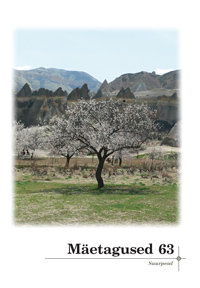Identiteet ja agentsus kaasaegses koltasaamide rahvatantsus
Identity and agency in contemporary Skolt Sámi folk dance
Author(s): Petri HoppuSubject(s): Customs / Folklore, Cultural Anthropology / Ethnology, Culture and social structure
Published by: Eesti Kirjandusmuuseum
Keywords: agency; culture; folk dance; identity; Skolt Sámi
Summary/Abstract: This article examines the role of dance of the Skolt Sámi in Finland in negotiating their history, identity and agency. The Skolt Sámi are a culturally and linguistically distinct group of the Eastern Sámi. Originally, they lived in a wide area, from Lake Inari eastward to the Russian city of Murmansk. Today, most Skolts live near Lake Inari in Finnish Lapland, where they were relocated after World War II. The multiple identities of the Skolts are actualized in many ways, in language, music, religion, but perhaps most distinctively in their dancing. Their dancing traditions, especially the quadrille, separate them from other Sámi in Finland and connect them to Northern Russian culture. Despite their dramatic past, the Skolts have preserved their culture and distinctive, yet ever-changing ethnic identities. Their identities are characterized by many points in their social and personal histories, and dancing is a part of the routes they have traveled within these experiences.
Journal: Mäetagused. Hüperajakiri
- Issue Year: 2016
- Issue No: 63
- Page Range: 53-66
- Page Count: 14
- Language: Estonian

